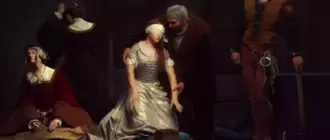
The era that brought the world the best masterpieces of Dutch art of all time
The Golden Age of Dutch painting is the common name for a great era in Dutch fine art, during which local artists created many unique masterpieces. The golden age of Dutch painting fell on the 17th century, it affected almost all genres known at that time and had a huge impact on the further development of European fine art.
The Golden Age gave the world a huge number of works by talented artists. According to the most conservative estimates of modern art critics, about a million paintings were created by Dutch painters during the century, and today the painting of that period is the most important cultural value of the Netherlands.

Features of the golden age of Dutch painting
The Golden Age of Dutch painting is a unique phenomenon in the history of world fine art. Unlike most other Western European countries, this region developed its own style of painting in 1600-1700, combining features of baroque and realism. Symbolic and allegorical images were also widely used in the paintings of local masters, and instead of a single art center, several original regional schools were formed in different cities: Leiden; Utrecht; Delft; Alkmaare; Haarlem; The Hague; Amsterdam.

The figures of the three most famous Dutch painters occupy a special place among the artists of the Golden Age:
- Rembrandt;
- Frans Hals;
- Jan Vermeer (Johannes Vermeer).

The works of these artists on the modern art market invariably belong to the most expensive price category, and their work is considered the pinnacle of the skill of that era. Most of the rest of the Dutch artists of that period in modern art criticism are usually divided into two main groups: “small Dutchmen” and “Utrecht caravaggists”.
The term “Little Dutchmen” should in no way be taken as an assessment of the level of talent or significance of the work of these painters. It characterizes only the small size of the authors” works and their specialization in chamber subjects.

The Utrecht caravaggists in their work developed the ideas of the brilliant Italian painter Caravaggio. Most of them spent a significant part of their lives in Rome, but achieved recognition in their homeland, returning from long trips to the Eternal City. Among them, the most famous names are:
- Gerrit van Honthorst;
- Hendrick Terbrugghen
- Dirck van Baburen;
- Matthias Stom;
- Paulus Bor.
17th century Dutch painting was surprisingly versatile. At the same time, its important distinguishing feature is the narrow specialization of most artists who have worked all their lives in one or at most two genres. The main reason for this was enormous competition, because of which the authors had to fight fiercely for customers all their lives and constantly hone their skills in the chosen field of art.
Dutch painting of the Golden Age includes countless works written in all the popular genres of that era: history; portrait; household; landscape; still life.

Along with traditional single portraits and self-portraits, Dutch artists also often painted group images of people. In addition, it was in those days that a special genre type of portrait appeared – tronie, in which the characters were captured with an unusual facial expression.
Thanks to the Dutch masters, still life has taken its rightful place in world art. Moreover, local artists have created a huge variety of subgenres, from floral to philosophical. And the famous sea, rural and urban landscapes still amaze spectators with magnificent views.

History of the Golden Age of Dutch Painting
The history of the Golden Age of Dutch painting is a graphic display of a series of events that took place at that time in a small European country. At the end of the 16th century, seven northern Dutch provinces gained independence and formed an independent state in the war with powerful Spain. The young republic became the center of European progress in trade, shipping, printing and textile industries.
In addition, in the Netherlands, Protestantism was finally established in the form of the dominant religion. This led to the decline of the religious genre in painting, but contributed to the development of other directions. Thanks to successful trade, the well-being of the inhabitants of Dutch cities began to improve rapidly, and many burghers began to acquire works of artists to decorate the interiors of their homes.

By 1625, a powerful art market had formed in the Netherlands, rich people bought dozens of paintings, and art collecting became a fashionable trend. The frantic demand contributed to the emergence of a huge number of artists and the development of various genres, ideal conditions for the flourishing of painting were formed.
In the next 50 years, the Dutch visual arts experienced an unprecedented rise. Civil servants, merchants, teachers, small traders and artisans became active buyers of paintings, and the profession of an artist became prestigious and well paid.
This continued until the mid-1670s, when, after a series of wars with England and France, the Netherlands lost its dominance in the world economy, and the well-being of the country”s inhabitants began to deteriorate rapidly. Under the new conditions, most artists were left without work, and by the beginning of the 18th century, the Golden Age of Dutch painting was over.

The most famous painters of the golden age of Dutch painting
Among the huge number of talented Dutch fine art masters of the 17th century, there are many worthy names. And yet, some of the most famous painters of the golden age of Dutch painting include:
Rembrandt is the greatest painter of the Netherlands of that era. His name is familiar even to people who are very far from art, and his works are distinguished by colossal dynamic tension and detailed character portrayal.
Frans Hals is an unsurpassed Dutch portrait painter, whose works have always been dominated by black. His five sons also became painters, although they could not surpass their father”s skill level.

Jan Vermeer is an artist whose creative heritage was appreciated by descendants only 250 years after his death. Vermeer became famous for his genre paintings and portraits, and the peak of his work came in the second half of the 19th century.
Jacob van Ruisdael is the most famous representative of the landscape genre of the Golden Age. Most of Ruisdael”s paintings are devoted to the theme of the greatness of the nature of his native country, and his creative heritage includes about 450 works.

Jan Steen is a unique master of humorous single and group portraiture, whose work introduces viewers to the fun way of life of ordinary Dutch people of that time. Sten also wrote many works of a religious and mythological genre, but preferred to look at life with irony.
The golden age of Dutch painting will forever remain in the memory of posterity thanks to the beautiful works of the brilliant artists of that era. Fortunately, a huge number of unique works have survived to this day in the expositions of the best museums and private collections of patrons of the arts.









